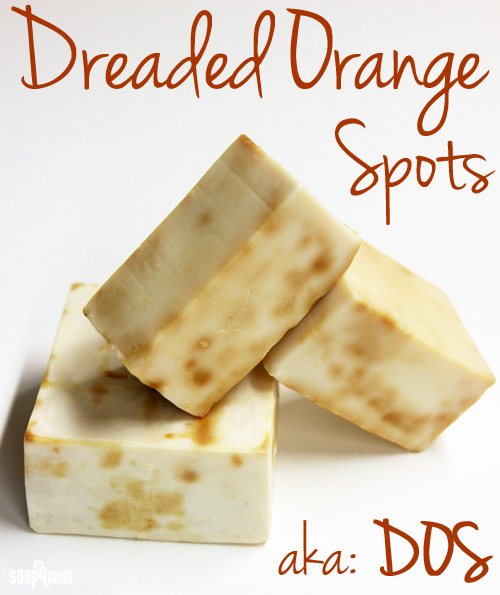Dreaded Orange Spots, also known as DOS, is something many cold process soap makers have unfortunately experienced. Dreaded orange spots are exactly what they sound like…orange spots on your soap! The most common cause of DOS is rancid oils, but there are several factors that can contribute to dreaded orange spots.
Dreaded orange spots can appear on cold process soap while curing, or months after it has been made. The appearance of DOS can range from a light orange to a deep rust color. DOS may appear in various sizes and places on the soap. Some bars may develop only one spot, while some bars become completely covered. Soap with dreaded orange spots is safe to use, but it is a cosmetic issue and may develop an unpleasant odor.
Several factors increase the likelihood of dreaded orange spots, but the most common is oxidative rancidity, or rancid oils. Like food, each soap making oil and butter has a shelf life. When the oil goes past its shelf life, the chance soap will develop DOS increases. Signs an oil has gone rancid include an unpleasant odor, or change in color.
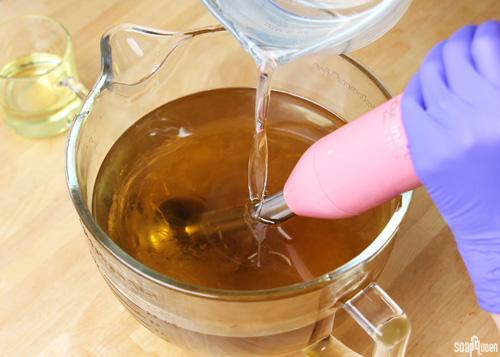 Always use the freshest oils and butters when making soap!
Always use the freshest oils and butters when making soap!
In the All Olive Oils Are Not Created Equal blog post, olive oil purchased from small grocery stores were more likely to develop DOS. Because the oil sat on the grocery shelf longer, the oils may not have been fresh. Oils and butters can be stored in the fridge or freezer to extend the shelf life. Always store soap making oils in a dark and cool place. If you’re curious about the shelf life of common soap making oils, the Free Beginner’s Guide to Soapmaking: Comon Soapmaking Oils blog post can help!
In addition to using fresh oils, it is important to use distilled water when making soap. Tap water or purified water water may contain a variety of heavy metals from old piping systems or naturally occurring minerals. Old metals and minerals can cause oils in soap to go rancid.
 Olive oil purchased from various grocery stores produced inconsistent results, including DOS.
Olive oil purchased from various grocery stores produced inconsistent results, including DOS.
The type of fragrance oil also affects the color of DOS. To produce soap with DOS, we deliberately used rancid oils and a high superfat. The soaps shown below were made from the same recipe, the only difference is the fragrance oil used. Notice how some DOS spots are dark orange, while some appear as a light yellow.
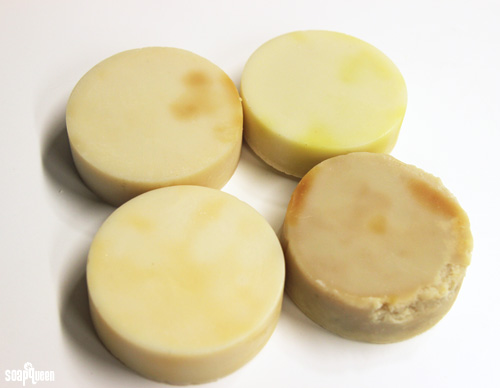
Another factor that may contribute to DOS is a high superfat. Superfat is the amount of oils and butters in the soap that did not go through saponification. For example, when a soap has a zero superfat, the lye and oils are perfectly balanced and all oils have been saponified. Superfatting the soap at 5 percent means 5 percent of the oils in your recipe did not saponify, and are “free-floating” within the bar.
To learn more about superfat and saponification, check out this Superfatting Soap Queen TV video. Superfatting soap increases the emolient properties, but also results in a softer bar. In our experience, a superfat of 5 percent gives soap plenty of skin-loving properties, while still producing a long-lasting firm bar.
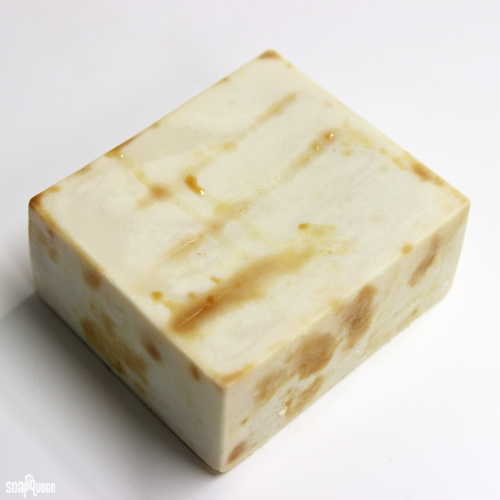 Soap containing a high superfat (5 percent or more), has an increased chance of developing DOS. Because these oils have not saponified, they may go rancid. If you like to superfat your soap higher than 5 percent, Rosemary Extract Oil (ROE), Vitamin E or Grapefruit Seed Extract (GSE) can be used to help combat superfat.
Soap containing a high superfat (5 percent or more), has an increased chance of developing DOS. Because these oils have not saponified, they may go rancid. If you like to superfat your soap higher than 5 percent, Rosemary Extract Oil (ROE), Vitamin E or Grapefruit Seed Extract (GSE) can be used to help combat superfat.
Another factor that contributes to DOS is temperature and humidity. While soap cures, store in a dry, well ventilated and cool place. While curing, soap begins to lose moisture. If the moisture cannot escape, the chance for dreaded orange spots increases. In the Soap Lab, we use a bakers rack with coated metal to cure soap. This allows plenty of air to come into contact with all sides of the soap. Why coated metal? Letting soap sit on any metal-rust will contribute to rancidity.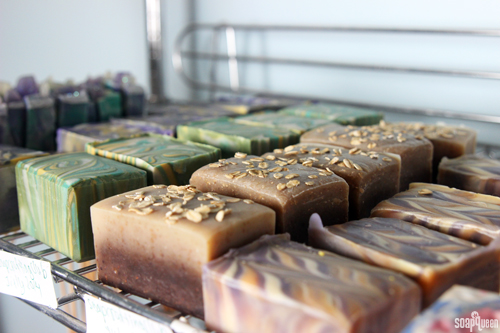
Humid air also increases the likelihood of dreaded orange spots. Because soap contains glycerin, it attracts moisture in the air. If you live in a humid climate, investing in a dehumidifier for the soap curing area can be beneficial.
Luckily, there are simple ways to avoid DOS! Here are a few tips to prevent developing dreaded orange spots:
- Use only the freshest oils and butters, from a reputable supplier.
- Research the shelf life of each oil you use, and use them within the shelf life.
- If you will not use the butters or oils quickly, store them in the fridge or freezer to extend the shelf life.
- Only used distilled water to make cold process soap.
- Avoid superfatting soap above 5 percent.
- While the soap cures, store in a dry, well ventilated and cool place, rotating soap so no soap portion is unaired for long
- Do not allow soap to cure on any rusty metal. If using a bakers rack, make sure the metal is coated.
Have you ever experienced DOS? If you have any additional tips or tricks for avoiding DOS, I would love to hear them!

